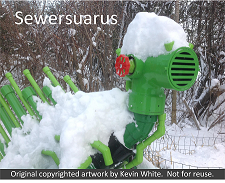
 |
REBOL for COBOL programmers |
Sample applications
Date written: October 12, 2012 This page outlines a plan of action for presenting some potentially-useful sample applications. Solving yesterday's problems with tomorrow's toolsCOBOL and REBOL were designed in different eras to solve different kinds of problems. With either tool, some things are easy and other things are hard. Following pages are going to present some sample programs that do some of the things that one might do (or have done) in COBOL. Why?People could have different reasons for learning REBOL. One possibility is that because COBOL is falling out of favor (even though it is an industrial-strength tool that can do just about anything you would want to do), a person might be looking for a replacement. Even if a tool is replaced, the problems might not be. People learn in different ways. Some can take a more abstract approach, and some need examples to form a framework in their minds where they can replace old concepts with similar new ones. This is for that latter class. How?An application will be developed in sort of a training manner, but in bigger bites. A person reading this already knows how to write programs. When it is time to present the REBOL way of doing something, we will try to find some middle point between plodding through the development a line at a time and presenting the finished solution in a big chunk. The goal is to help you understand, quickly, enough REBOL to do useful stuff. When you get to that point, you can use REBOL, and, concurrently, expand your knowledge of it by rereading the documentation and trying new things. Something to take homeEach application will start with an introductory page explaining what the application is, a brief specification. Also on that page will be links to compressed archives (zip and tar) of the entire application in a form such that you could copy it to your own computer and run it One of the REBOL goals is simplicity, and one of the goals of these applications is that the "installation" is so simple that one does not need a formal "installation;" one can copy the application to one's computer and just run it. Un-installing means just deleting it. Before you beginThis is not planned as a REBOL training guide. You really have to know a bit of REBOL. The expected audience for these pages is someone who is trying understand REBOL and finds it a bit hard, or maybe finds the documentation a bit lacking. The hope is that you would look at these pages and the sample applications, and have a number of "aha" experiences, where you say, "Aha, so THAT's how that works." Also be aware that there are a lot of problems to solve that never existed in the COBOL era, so one never even would think of approaching them with COBOL. For example, REBOL can do some interesting graphics stuff. There exists a sample paint program in REBOL. Applications like that will not even be touched here. The main reason for that is, I have no idea how to solve those things, no matter what tool is available. In those areas, I am in the ranks of the newbies. |